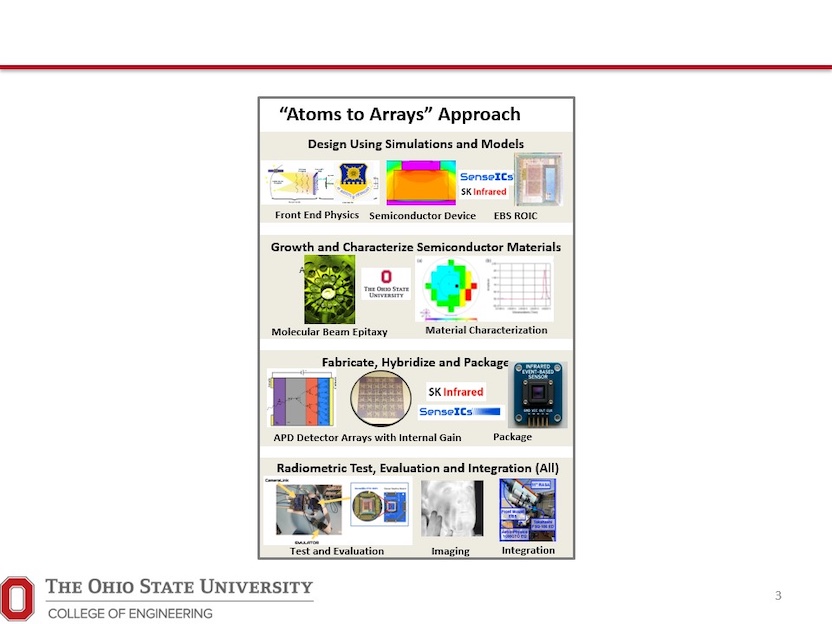Area of Interest (AOI): 4. Commercial Space in Low Earth Orbit
Innovation: The specific challenge that our team will address in the proposed project is to develop and integrate a state-of-the-art event-based sensor (EBS) that combines readout integrated circuit (ROIC) technology developed by SenseICs with high performance infrared (IR) detectors developed by Ohio State and SK Infrared. These will be tested for space domain awareness applications by AFIT, who will also perform end-to-end modeling for future improvements and mission-specific scenarios. The Space GUIDE program proposes to bridge the gap between EBS and IR sensor technologies with a new EBS design leveraging a front-end semiconductor infrared avalanche photodiode (APD) to amplify true signals and suppress the noise from a ROIC. The proposed initial prototype will target the short wave infrared (SWIR) band to leverage a track and communication demonstration opportunity through an on-orbit satellite equipped with a 1550nm laser diode. We anticipate SWIR’s advantage will be strongest for observing LEO satellites due to their prevalent use of silicon-based solar cells which reflect SWIR.
Objective: The objective of this work is to demonstrate an event-based SWIR sensor that combines a low noise antimonide based APD with an event-based ROIC to suppress noise and improve sensitivity. This will serve as a foundation for further technology development and demonstration beyond the scope of the OFRN program. This work aims to demonstrate the unprecedented advantages of high sensitivity to support event-driven detection in SWIR imaging applications, enabling enhanced tracking and communication capabilities with low latency and reduced SWaP requirements. In addition, our proposed SEE activities will initiate development of an advanced EO/IR research, development, and manufacturing workforce.
Background: Over 45,500 space objects orbit Earth, with over 75% classified as resident space objects (RSOs) that threaten critical U.S. Space Force assets. Tracking and characterizing RSOs is challenging due to reliance on ground-based sensors, which suffer from coverage gaps (e.g., oceans, non-allied regions) and observational limitations (e.g., lighting, atmosphere). RSOs often have weak visible signatures, especially at night, while infrared (SWIR, MWIR, LWIR) offers richer spectroscopic and thermal data. However, infrared imaging systems face high cost, size, weight, and power (C-SWaP) demands, and generate massive data volumes (>1 GBps), straining on-orbit downlinks. Event-Based Sensors (EBS) offer a solution by detecting pixel-level changes, enabling high-speed tracking with less than 10% of the typical data rate, breaking the traditional trade-off between large-format FPAs and data bandwidth.



